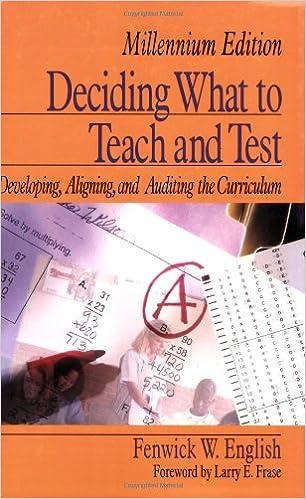Question
1. What is ordinarily the first step in the formation of a corporation? a. Development of by-laws for the corporation b. Issuance of the corporate
1. What is ordinarily the first step in the formation of a corporation?
a. Development of by-laws for the corporation
b. Issuance of the corporate charter
c. Application for incorporation to the appropriate Secretary of State
d. Registration with the SEC
2. Which of the following statements is not considered a disadvantage of the corporate form of organization?
a. Additional taxes
b. Government regulations
c. Limited liability of stockholders
d. Separation of ownership and management
3. Which of the following represents the largest number of common shares?
a. Treasury shares
b. Issued shares
c. Authorized shares
d. Outstanding shares
4. If Kiner Company issues 3,000 shares of $5 par value common stock for $70,000, the account
a. Paid-in Capital in Excess of Par Value will be credited for $15,000.
b. Common Stock will be credited for $15,000.
c. Paid-in Capital in Excess of Par Value will be credited for $70,000.
d. Cash will be debited for $55,000.
5 Rancho Corporation sold 200 shares of treasury stock for $40 per share. The cost for the shares was $30. The entry to record the sale will include a
a. credit to Gain on Sale of Treasury Stock for $6,000.
b. credit to Paid-in Capital from Treasury Stock for $2,000.
c. debit to Paid-in Capital in Excess of Par Value for $2,000.
d. credit to Treasury Stock for $8,000.
6. Corporations generally issue stock dividends in order to
a. increase the market price per share.
b. exceed stockholders' dividend expectations.
c. increase the marketability of the stock.
d. decrease the amount of capital in the corporation.
7. Retained earnings is increased by each of the following except
a. some disposals of treasury stock.
b. net income.
c. prior period adjustments.
d. All of these increase retained earnings.
8. Prior period adjustments
a. may only increase retained earnings.
b. may only decrease retained earnings.
c. may either increase or decrease retained earnings.
d. do not affect retained earnings.
9. If a stockholder receives a dividend that reduces retained earnings by the fair market value of the stock, the stockholder has received a
a. large stock dividend.
b. cash dividend.
c. contingent dividend.
d. small stock dividend
10. Andy Eggers has invested $150,000 in a privately held family corporation. The corporation does not do well and must declare bankruptcy. What amount does Eggers stand to lose?
a. Up to his total investment of $150,000.
b. Zero.
c. The $150,000 plus any personal assets the creditors demand.
d. $100,000.
11. Which of the following is not true of a corporation?
a. It may buy, own, and sell property.
b. It may sue and be sued.
c. The acts of its owners bind the corporation.
d. It may enter into binding legal contracts in its own name.
12. Dividends in arrears on cumulative preferred stock
a. are shown in stockholders
Step by Step Solution
There are 3 Steps involved in it
Step: 1

Get Instant Access to Expert-Tailored Solutions
See step-by-step solutions with expert insights and AI powered tools for academic success
Step: 2

Step: 3

Ace Your Homework with AI
Get the answers you need in no time with our AI-driven, step-by-step assistance
Get Started


